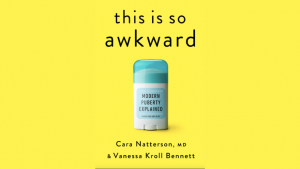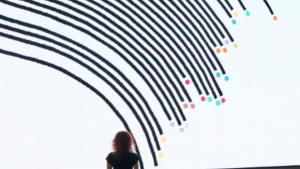First Published in
The Designer's Dilemma
Elisha Otis did not invent the elevator. Elisha Otis did create the safety catch that would prevent a vertically mobile enclosure from plummeting from great heights to great depths at very high speeds, injuring its passengers. This invention was demonstrated at the 1853 World's Fair in New York, almost 5 000 years after the elevator first came into usage.
Technically, Otis did not invent the elevator, although he is regularly credited with it. But it was his incremental improvement to an existing technology that launched what we now know as the elevator industry, the great facilitator of skyscraping cities, of vertical living, working and buying.
Otis exemplifies what I call the designer's dilemma – the tension that exists in the space between inventing and improving. If the designer's role is to drive innovation on a large scale, how can we resolve ourselves to the incremental improvements that are necessitated by today's increasingly complex culture?
Now, this question is more relevant than ever: there is no single innovation that can counteract the innumerable injuries we have done to the global ecosystem. But if the key to tackling our environmental challenges lies within this world of iterative change and cumulative improvement – and I believe that it does – then what does this mean for design as a whole?
Cultural pressures for radical change
An oversaturated consumer market and increasingly sophisticated end-user have made it difficult to differentiate products and services in today's economy. Design has become the de facto solution for pursuing, and owning, the habits and routines of consumers. So strident is the competition for shelf-space and mindshare that incremental improvement is often thought to be akin to colossal failure. While designers excel at making the small changes that shape everyday experiences, in this competitive climate we are compelled to pursue the next big thing with great ferocity. We seek change in the Orwellian sense – paradigm-shifts, phoenix products, dot-something web landmarks. And success has a short memory; we are measured only by our most recent achievement: the last to-market, the newest award-winner, the latest recognition by the digerati.
It is a challenge, then, that in this time of fierce competition and creative pressure, we are pummelled by the tsunami of the green movement. It is virtually impossible to avoid the daily discussions of climate change, G8 debates and company manifestos. This is the single most significant movement of our generation – a veritable perfect storm of social awareness, corporate interest, and technological advancement. All things "green" have entered the cultural vernacular, and our contemporary currency is a fluency with these issues. Just as the market pressures us to create more individual design contributions, it has become obvious that the key to meaningfully addressing environmental issues is through additive change – continual improvement, rather than discrete invention. There is no magic bullet, no single aha moment, no "iPod" of the green movement.
So in this time of transformation, when new thinking is so critical, why are designers at a standstill? Why has design not been at the forefront of this movement with new solutions and roadmaps for change? In many ways, the green movement is threatened by the prevailing mentality in design today – one that equates sustainability with stasis, and collaboration with mimicry.
Of course, there are the requisite resin-seeped art pieces, recycled coated paper packaging explorations, and sunflower-seed kitchen cabinets. But at this cultural inflection point, we need to do more than create niche products and art pieces. We need to do more than play corporate catch-up or throw our hats into the ever-enlarged PR ring of greenery. We need to stimulate mass change.
In the same way that we approach design challenges – not by purporting to have all of the answers, but instead by assuredly asking the right questions – we must recognise that we don't have the solution yet because our formula has been wrong. Our addiction to sweeping change has hobbled us from seeing the most obvious opportunities for improvement. In order to create a radical position around sustainability, we need to change our concept of design. Our first green products must be ourselves.
We're not alone
Perhaps the most revolutionary characteristic of the environmental movement is its sheer scope. Activist Paul Hawken describes it as the largest and fastest-growing movement in the world, comprising more than two million organisations worldwide. This vast reach provides a great opportunity for facilitating change – but it also poses a unique set of challenges regarding the management and self-identity of such a broad, loosely connected network.
Designers are just one of many groups clamouring to contribute within this space. NGOs, commercial businesses, technologists, academics and governments are all forging ahead with their individual visions, sharing the public's attention. Together, the many voices of this movement form a harmony, deeper and more complex than any solo the designer alone can offer.
Yet this is a new and uncomfortable space for many designers to occupy, indoctrinated as we are with the importance of differentiation and exclusivity. To date, we have succeeded in our difference, not our similarities. We are accustomed, in many ways, to known boundaries. This is not to say that designers are not continuously pushing those boundaries and rewriting our own histories and futures, but rather that our design thinking tools and methods (narrative, motion, form, virtuality) have remained relatively constant. Even as our industry has evolved to integrate robust strategic and analytical perspectives, our jurisdiction has remained clear. Even as we engage in transformational thinking, build new business and brand models, and tackle human-interaction challenges in emerging economies, we are still designers. The horizon line moves with us.
Our clients expect our ability to translate research and ideation into concrete products and services. And they know we'll be able to differentiate them – at least for a while – from their competitors. But now we are not dealing with competitors, we are elbow-to-elbow with people who share our ethic, and to engage in the traditional competitive stance would be counterproductive. In a world where everything is connected and we all share common goals, how do we satisfy our deep instinct to create a unique position for ourselves?
We need a new strategy.
When in deep waters, become a diver
As we redefine the role of design in this new world order, we must look to each other for ideas and inspiration. Individually greening our companies is not sufficient. By pooling our knowledge, we can create a network in which every client is compelled to engage in a discussion of sustainability – no matter which firm it selects as a design partner. Together, we can advocate for the improvements – large and small – that will produce lasting change.
By creating independent "green design" practices that exist adjacent to traditional industrial design, engineering and digital media design offerings, we only marginalise the issue. To effect real change, we need to apply a green lens to all of our activities, not just some of them. Environmental intelligence needs to be fully assimilated within the entire design process, across the entire field.
Of course, in order to engage in an informed conversation with our clients, we also need to commit to educating ourselves and our teams about eco-friendly behaviours and environmental strategies. This undertaking is significant, for as we ask more in-depth questions, the answers become more difficult to locate.
Design company frog has initiated a Kyoto Treaty of Design – a call to arms for the creative community around environmental stewardship. Our initial thoughts and conversations have led to these basic tenets, but these are just a start. We ask each member of the design community to commit to these principles and join with us in building upon them:
Collectively:
- Helping craft a larger social equity protocol for the design community.
- Publicly ratifying that agreement, and committing to its compliance.
- Contributing to the communal knowledge base for sustainable design.
- Advancing the intellectual understanding of environmental issues from a design perspective.
Individually:
- Offering green analysis to clients, or partnering with others to conduct this analysis.
- Providing material alternatives for sustainable product development.
- Investigating manufacturing processes and rewarding green innovation.
- Minimising environmental impact from prototyping or model-making activity.
- Publicly reporting the carbon footprint of our firms.
- Becoming educated about the environmental impact of our work.
Everything we know is inverted. Everything we rested our beliefs on is cast in a new light. Change happens fast, and we need to act quickly. We are revisiting our practices, our methods and our philosophies. We are talking to each other. We are leaving our egos behind.












